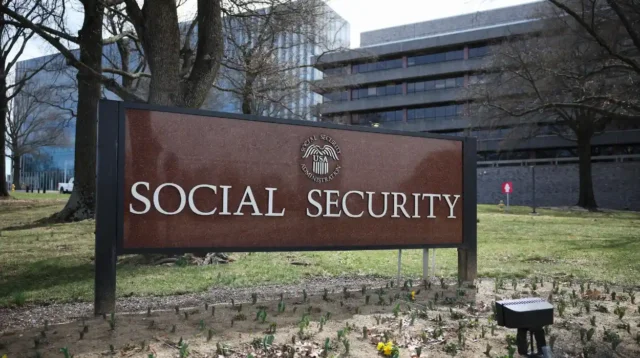Transparency is one of the democratic building blocks, and it ties the citizens to the activities, policies and the accountability processes of their governments. In 2025, transparency will be critical towards achieving legitimacy, civic trust and participation. It is all about allowing citizens to check power and impact decision making processes.
But transparency is not just about information anymore, it involves the quality, accessibility and timeliness of information provided. The OECD Government at a Glance report 2025 notes that the disclosure of fiscal data and policy decisions has improved in most countries but also shows that critical points such as the declaration of assets by the officials and the availability of the meeting agenda remain unaddressed. These loopholes present difficulties to real accountability and empowerment of citizens.
The Complexity of Implementing Transparency
The contemporary governments have to deal with a more complex information environment. In 2025, researchers presented the concept of an innovative way of thinking at the World Government Summit that would ensure an effective way of communicating with the government that would accommodate the dynamics between politics, media, technology, and citizen expectations. The development of clear communication plans therefore involves a complex of priorities and influences to manoeuvre around.
With technological solutions, unparalleled opportunities of open governance have been presented such as real time data portal and interactive reporting dashboard. However, the amount of published data may easily overwhelm the citizens and give the illusion of transparency where there is actually a lot of information that is not clear. Disclosures can not be translated to understanding and trust without being contextualized and simplified.
Managing Relevance and Timeliness
Good transparency is premised on how the government provides not only available information, but also timely and meaningful information. Too much technical or outdated information may hinder the real operation of government especially when messages do not relate to the real life concerns of the citizens. To achieve the goals of transparency in practice, mechanisms to filter, explain, and highlight content that is important to them need to be developed.
Political Dimensions of Transparency
Transparency is political in nature and can be easily manipulated. Governments can pick and choose information to limit stories, serve interests, or discourage investigations. Transparency can also be used as a political tool by governments as well as by stakeholders to either expose or hide sensitive matters.
This dilemma is demonstrated by the recent scandals of transparency in media of European public services. The criticisms on behalf of budget releases or editorial independence can represent more far-ranging political or business motives. Instead of representing explicit responsibility, transparency arguments can be seen as at times a proxy to power struggles, which makes the normative aspect of governance communication more difficult.
Legal Structures vs. Political Incentives
Political incentives can also influence the application of transparency despite formal laws that ensure people access such information. Elected officials might have an interest in the disclosed information being secret because it can jeopardize their political survival or be used as a weapon by the competition. This strain on both institutional commitments and political survival usually constrain the practical enactment of the principles of transparency.
Meeting Public Expectations for Effective Communication
The requirements of the citizens in 2025 do not only rely on the supply of information but also on the quality of information shared by the governments. The citizens would require clear, proactive and inclusive messages that clarify complex policy affairs in a simple language. This has put government communicators in an important position of a credibility and trust architect.
The examples of local governments indicate that the communication approaches of minimizing misinformation and maximizing community engagement based on transparent communication can make policy more acceptable. The increased acknowledgment of communication professionals as strategic partners is an expression of the realization of the fact that open discourse is the cornerstone of democratic health.
Trust, Empathy, and Responsiveness
The key element of trust is not only openness, but also the way the governments listen and react. When transparency leads to two-way communication, recognition of citizen feedback, concerns and involvement in policy formulation, it makes sense. This necessitates governments to invest in skills, platforms and organizational cultures that enable empathy and accountability.
Overcoming Barriers to Transparency
Despite formal commitments, transparency faces practical and systemic barriers. These include bureaucratic resistance, uneven enforcement of freedom of information laws, resource limitations, and digital exclusionary practices. The 2025 “Foilies” report underscores frequent governmental failures to comply with public records requests, highlighting enduring transparency deficiencies.
The systems of freedom of information do not always have the power to enforce them to the letter. Even where legal structures are strong, backlogs, small interpretations of exemption and administrative slowness are part of the undermining of the norms of transparency.
Bridging Digital and Cultural Gaps
Digital tools are useful only in case citizens can access and use them; in other words, they must be literate. Digital disparities across geographical, age, and income lines result in unequal access to transparency efforts. Meanwhile, the lack of trust among people, the cultural distrust towards the government, or the perception of being cheated on previously can diminish the readiness of the citizens to participate in the official communication.
Reforms should not only look at infrastructure but also the issue of trust-building as well. It implies investing in the public media, civic education, and means of democratic participation which enable people to make sense of and engage with government openness activities.
Evolving Models of Governance Communication
New versions of transparency focus on co-creation whereby governments, civil society and the populace come up with how and what information is shared. Such approaches include participatory budgeting, open policy consultations and citizen advisory panels. These models transform transparency into a top-down responsibility to a joint responsibility.
They question conventional ideas about secrecy and domination, too, preferring more open, responsive and collaborative communication ecologies. Transparency is included in a process of dialogue and not a one-time presentation of facts.
Anticipating Future Challenges
With the development of technologies such as AI, blockchain, and the deepfake media, the challenges of authenticity, misinformation, and algorithmic bias will also have to be addressed in the future in transparency systems. Governments need to foresee the potential of both the enrichment and complications of transparency by the emerging tools and must be forward-thinking in policy, regulation, and ethics.
Open governance communication is an active and problematic space, where the ideals come into contact with practical realities. The changing world scenario in 2025 challenges the ability of governments to emerge above complexity and politics, and develops a communication that not only informs but gives power to the citizens. The need to comprehend and address subtle barriers to openness continues to be imperative in the maintenance of democratic legitimacy in the era where information elusion and an increase in publicity is the order of the day.





